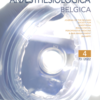Position Statement of the Society for Anesthesia and Resuscitation of Belgium (SARB), the Belgian Association of Regional Anesthesia (BARA) and the Belgian Professional Association of Specialists in Anesthesia and Resuscitation (BSAR-APSAR)
Published online: Sep 30 2019
The Society for Anesthesia and Resuscitation of Belgium (SARB) holds as one of its primary goals the development of safe anesthesia techniques for providing surgical and obstetric anesthesia both during general and regional anesthesia. This clear focus on patient safety has underpinned its educational activities and clinical guidance since its creation >50 years ago. In the present position statement, the SARB focusses on regional anesthesia techniques performed for surgery and pain relief. This guidance document is developed together with the Belgian Association for Regional Anesthesia (BARA) and the Belgian Professional Association of Specialists in Anesthesia and Resuscitation (BSAR-APSAR).
SARB adopts a holistic approach to regional anesthesia, believing that the technical performance of a block must not be separated from the overall care of the patient, to include thorough clinical assessment of patients scheduled to undergo surgery, consideration of all available options for regional and general anesthesia, effective communication of the risks and benefits of the alternatives to the patient, the acquisition of informed consent, the preparation of the patient for anesthesia and surgery, the performance of a range of regional anesthetic techniques, physiological monitoring during surgery, surveillance during recovery from anesthesia, and postoperative care. In particular, SARB believes that the healthcare professional delivering regional anesthesia must not only be cognizant of the potential complications of regional anesthesia but must also be able to diagnose the complications, manage them clinically, and offer alternative therapies that may become necessary as a result, such as resuscitation and the safe administration of general anesthesia to a physiologically unstable patient who may have multiple comorbidities. SARB believes that this breadth of skills and knowledge can only be acquired through a formal, medical education program followed by comprehensive training in anesthesia, and therefore thinks that patient safety is best served when regional anesthesia is delivered by medically qualified healthcare professionals who are undergoing or have completed an accredited full training program in anesthesiology.
Historically, regional anesthesia has been delivered only by medically qualified professionals in the substantial majority of European countries. However, changes in funding models, the need for cost efficiencies and increased clinical workloads have driven the development of “extended roles” for non-medically qualified healthcare professionals such as nurses, anesthetic nurses, operating depart- ment practitioners (ODPs), paramedics and physician’s assistants in anesthesia [PA(A)s]. In some countries, these healthcare professionals have extended their roles to the performance of a variety of regional anesthetic techniques such as sub- Tenon’s, fascia iliaca and brachial plexus blocks. While SARB, BARA and BSAR-APSAR fully understand the pressures upon health services to be cost-effective and innovative, they cannot support the development of working practices in which patient safety is compromised by the pursuit of these goals. After careful consideration, the Boards of the three societies have decided to issue guidance to its members with regard to the performance of regional anesthetic techniques by medically qualified and non-medically qualified healthcare professionals.
Guidance
Regional anesthetic techniques (spinal, epidural, combined spinal epidural, percutaneous plexus blocks, percutaneous field blocks and percutaneous peripheral nerve blocks) should only be performed by anesthesiologists or anesthesiologists in training.
SARB, BSAR-ASPAR and BARA cannot currently support the performance by non-anesthesiologist trained physi-cians or non-medically qualified personnel of spinal, epidural and other neuraxial blocks, plexus and other trunk blocks, and peripheral nerve blocks. Performing a regional anesthetic technique is much more than a technical act and therefore can only be performed following extensive and in depth training.
